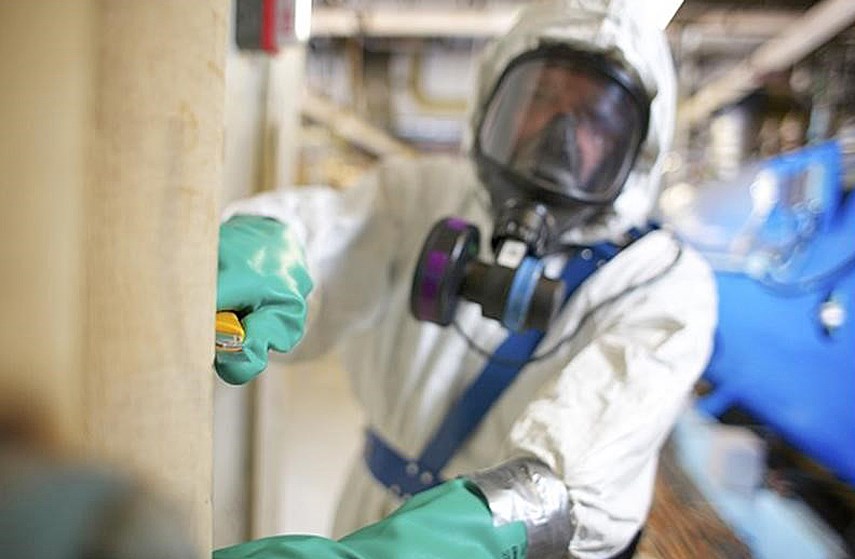Thinking about home renovations? If your home was built before 1990, it probably contains asbestos, which will have to be removed safely before any other work can begin.
Asbestos is an odourless, colourless, naturally occurring mineral that can be found in more than 3,000 building materials used in homes built before 1990.
Some common affected materials include vinyl and linoleum flooring, loose insulation, roof shingles, stucco, pipe insulation, gypsum-board filling compound and deck under-sheeting, to name a few.
In most cases, asbestos-containing materials are safe if left alone. But when disturbed, asbestos fibres can be released into the air and breathed in. That exposure can cause serious health concerns, including lung diseases and cancer.
In B.C., asbestos-related diseases are the leading cause of death for workers, and the numbers are on the rise. Between 2008 and 2017, 617 workers died from asbestos-related diseases, mainly from exposure decades ago, when it was still being used in building materials.
To address the issue, WorkSafeBC is complementing our prevention team’s inspection efforts with a public-awareness campaign directed at homeowners. We want to ensure that homeowners who are planning on renovating or demolishing older buildings are aware of the danger hiding in plain sight, and that they contact a contractor to identify and safely remove any asbestos before a project begins.
Contractors have a responsibility to keep their employees safe at the worksite. So, what’s your responsibility as a homeowner if you’re renovating?
Before starting work, ask your contractor whether it is likely that your home contains asbestos.
If so, you must hire a qualified professional to take samples of suspect materials for testing in a laboratory, which will produce a report identifying the materials that contain asbestos.
Once these materials have been identified, they must be removed by a qualified asbestos-abatement contractor. Make sure the contractor you use is registered with WorkSafeBC, and that they have the knowledge, experience and equipment to safely remove the asbestos.
When the abatement is complete, the contractor will provide a report confirming that all the asbestos has been removed, and your home will be ready for renovation and is asbestos-safe.
Identifying and removing asbestos is the right thing to do — not only to ensure the health and safety of those doing the work, but also that of you and your family.
To learn more, visit thinkasbestos.com.
Al Johnson is the Vice-President, Prevention Services, at WorkSafeBC.



